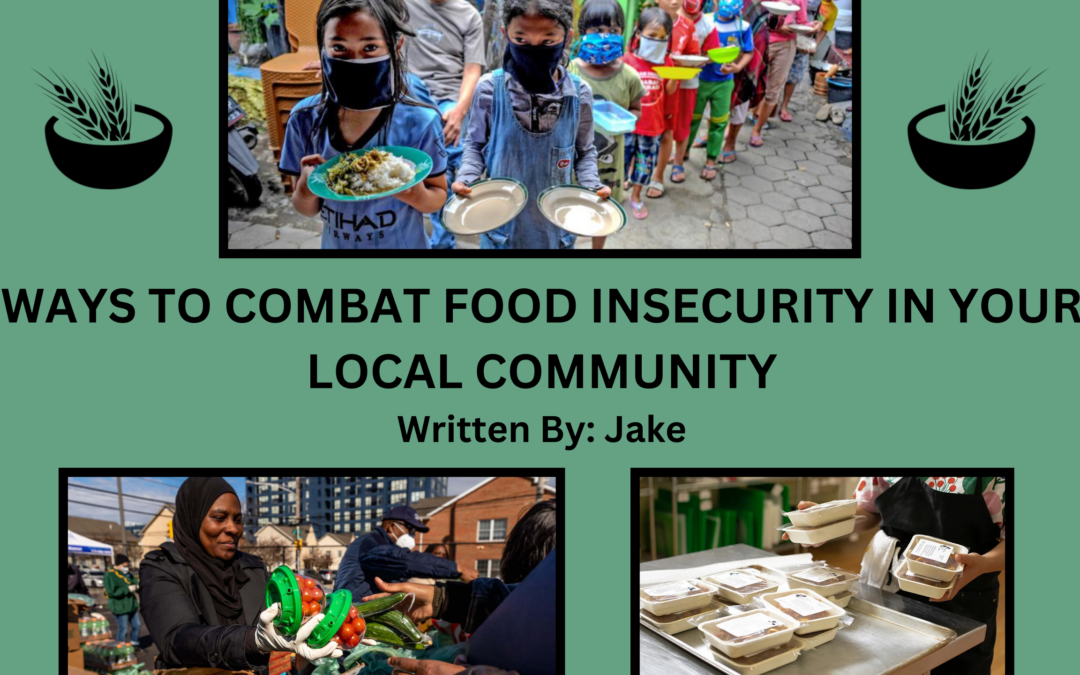Written by: Jake
Edited by: Julia Georgescu
Designed by: Fatima Khan
Published by: Maryam Khan
What is Food Insecurity?
 Food insecurity is defined as having inadequate access to food. Although many may think the issue only effects developing countries, it’s very much prevalent in first-world countries like Canada. A new report was done by Food Banks Canada showed that 18% of the population is suffering from food insecurity. A previous report released last year showed an all-time high of food bank visits, with 1.5 million Canadians Resorting to food banks in March 2022.
Food insecurity is defined as having inadequate access to food. Although many may think the issue only effects developing countries, it’s very much prevalent in first-world countries like Canada. A new report was done by Food Banks Canada showed that 18% of the population is suffering from food insecurity. A previous report released last year showed an all-time high of food bank visits, with 1.5 million Canadians Resorting to food banks in March 2022.
Health Effects of Food Insecurity
People living in food-insecure households are subject to many health problems, including heart disease, hypertension, poor oral health, and chronic pain. Food insecurity also makes it hard for those with health conditions to afford proper treatments and medications. Almost half of adults living in food-insecure households report delaying, skipping, or reducing prescription medications. Mental health also takes a toll. The likelihood of depression, anxiety disorders, mood disorders, and suicidal thoughts is substantially higher in food-insecure homes. Food insecurity among children has been linked to hyperactivity and inattention.
Causes of Food Insecurity:
- Unemployment and low wages
- Lack of affordable housing
- Lack of affordable childcare
- Systemic racism
Ways to Combat Food Insecurity in Your Community:
-
- Volunteer at Food Banks: Food banks directly fight food insecurity by offering food to the needy. There are many volunteer positions to take on at food banks.
- Organize or Donate to Food Drives: Donating non-perishable food items through food drives is a great way to fight food insecurity. You can reach out to family and friends to collect food items from them as well. Some nutritious and non-perishable foods you can donate are canned tuna or salmon, canned chicken, and canned fruits and vegetables.
- Hold a Virtual Food Drive: A virtual food drive is where online monetary donations are collected to support food banks.
- Start a fundraiser: A fundraiser is a great way to get the community together and support a good cause. Some ideas include bake sales, t-shirt sales, and garage sales.
- Reduce Food Waste: According to the Food and Agriculture Organization of the UN, 1.3 billion tonnes of food is wasted globally. The majority of the food wasted comes from food service providers that throw away excess food. We should urge those corporations to donate the excess to food banks or shelters.
Food Insecurity Among Indigenous Communities
It’s worth noting that poverty and food insecurity effects indigenous communities disproportionately more, due to systemic and historic discrimination. Wild food becomes less secure due to the loss of land rights, and they are often unable to afford healthy food at supermarkets, due to living in low-income homes. Residential schools are one of the factors to blame, since their cultural knowledge and traditions were erased, such as hunting and food preparation knowledge.
References
https://globalnews.ca/news/9985761/food-insecurity-poverty-report-canada/
What are the implications of food insecurity for health and health care? – PROOF (utoronto.ca)
https://borgenproject.org/indigenous-food-insecurity-in-canada/
https://www.livekindly.com/food-insecurity-how-can-we-help/
Fight Food Insecurity: Options Beyond Helping at Food Kitchens – GoodRx

